Bullish Candlestick Patterns
Bullish patterns candlestick is a familiar pattern for investors. Understanding this tool will help you buy stocks more effectively in the market.
Bullish patterns candlestick is a commonly used technical analysis tool by investors to track price fluctuations. Thoroughly understanding this type of candlestick will help you gain more insight into buyer behavior, identify trend reversals for successful trades, and potentially yield greater profits.
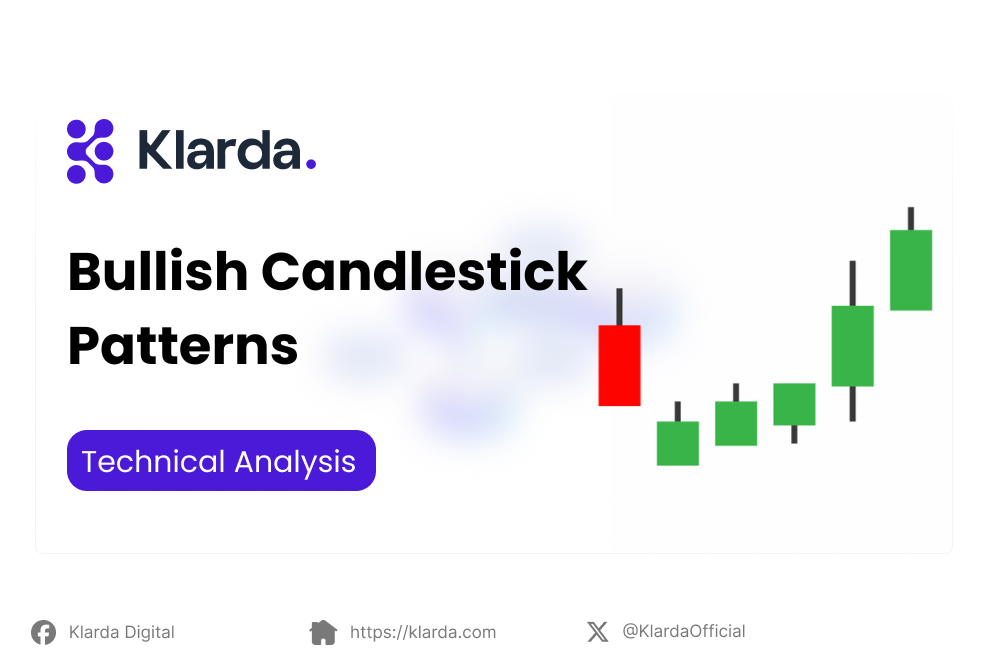
KEY TAKEAWAYS
- Bullish candlestick patterns are visual formations on price charts that signal a potential upward trend in the price of an asset.
- It encompasses various types, each with distinct characteristics that investors need to understand.
- Learning how to trade with these candlestick patterns will help you trade more smoothly and potentially gain more profits.
WHAT IS BULLISH PATTERNS CANDLESTICK?
Bullish candlestick patterns are visual representations on a price chart, signaling the potential upward movement of an asset. They are based on the idea that the shape and color of a candle can reflect buying and selling pressure in the market.
However, candlestick patterns are not perfect indicators of future price movements. They should be used in conjunction with other technical analysis tools and fundamental analysis to make well-informed trading decisions.
TYPES OF BULLISH PATTERNS CANDLESTICK
Bullish candlestick pattern has many types. Here are all the bullish candlestick patterns:
Bullish Engulfing Candlestick Pattern
What is bullish engulfing candlestick pattern? The bullish engulfing candlestick pattern is a pair of two contrasting candles that appear in a downtrend. The first candle is bearish, and the second candle is a bullish candle with a longer body that engulfs the previous candle.
The bullish candle opens and closes at prices lower than the closing price of the preceding bearish candle. This is a strongest bullish candlestick pattern, effective in derivative commodity investments.
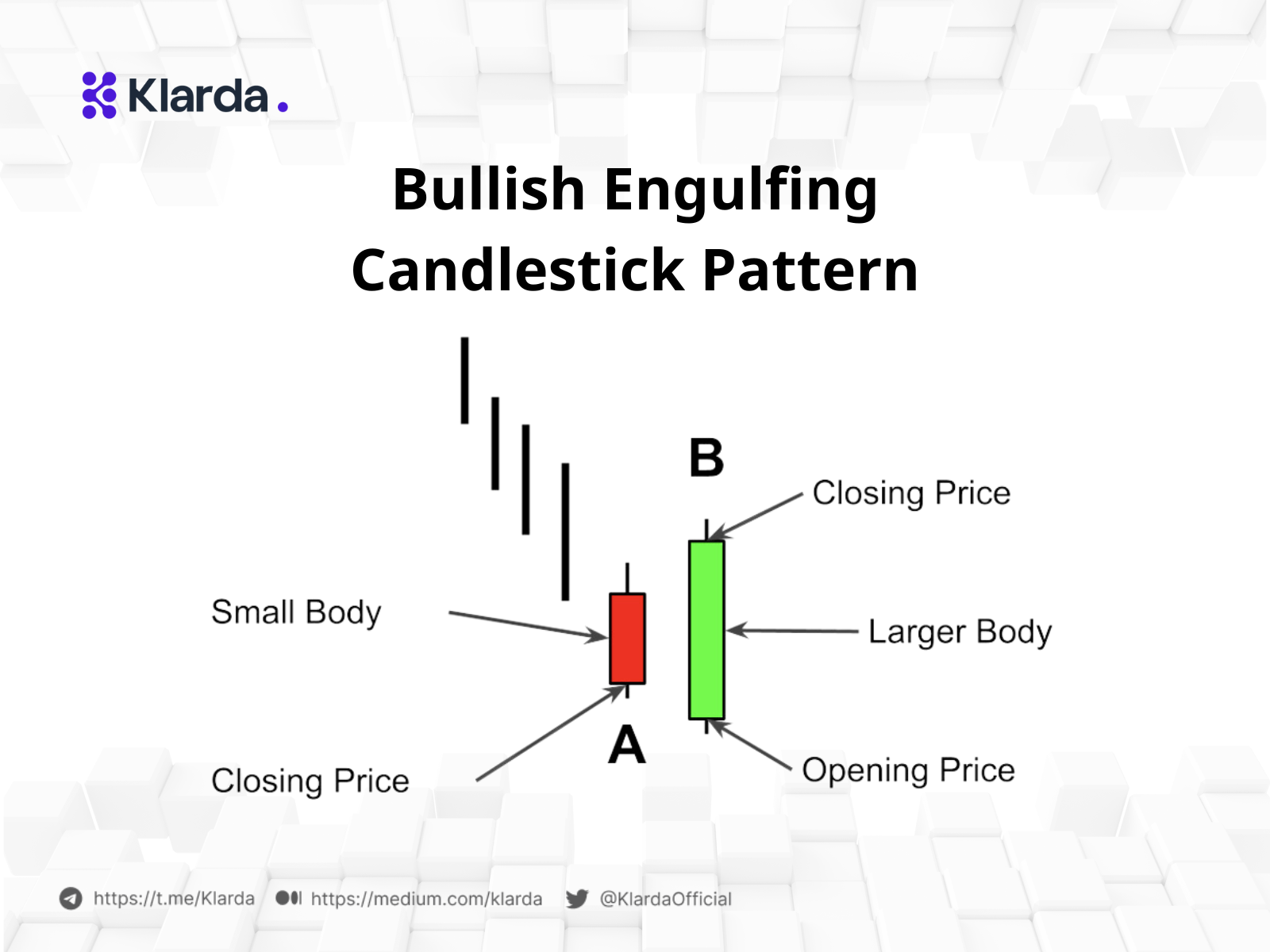
Bullish Engulfing Candlestick Pattern
Bullish Piercing Candlestick Pattern
This pattern consists of a long red candle followed by a long green candle. It is a pattern signaling an early end to a downtrend to start a new trend where prices may rise or move sideways. The characteristics of the bullish piercing candlestick pattern are as follows:
- Occurs at the end of a downtrend
- The first candle is a large bearish candle
- The following candle is a bullish candle with a minimum length of 50% of the first candle.
This candlestick pattern indicates that buyers have the potential to resist a strong downtrend and cause confusion for sellers as prices rise back.
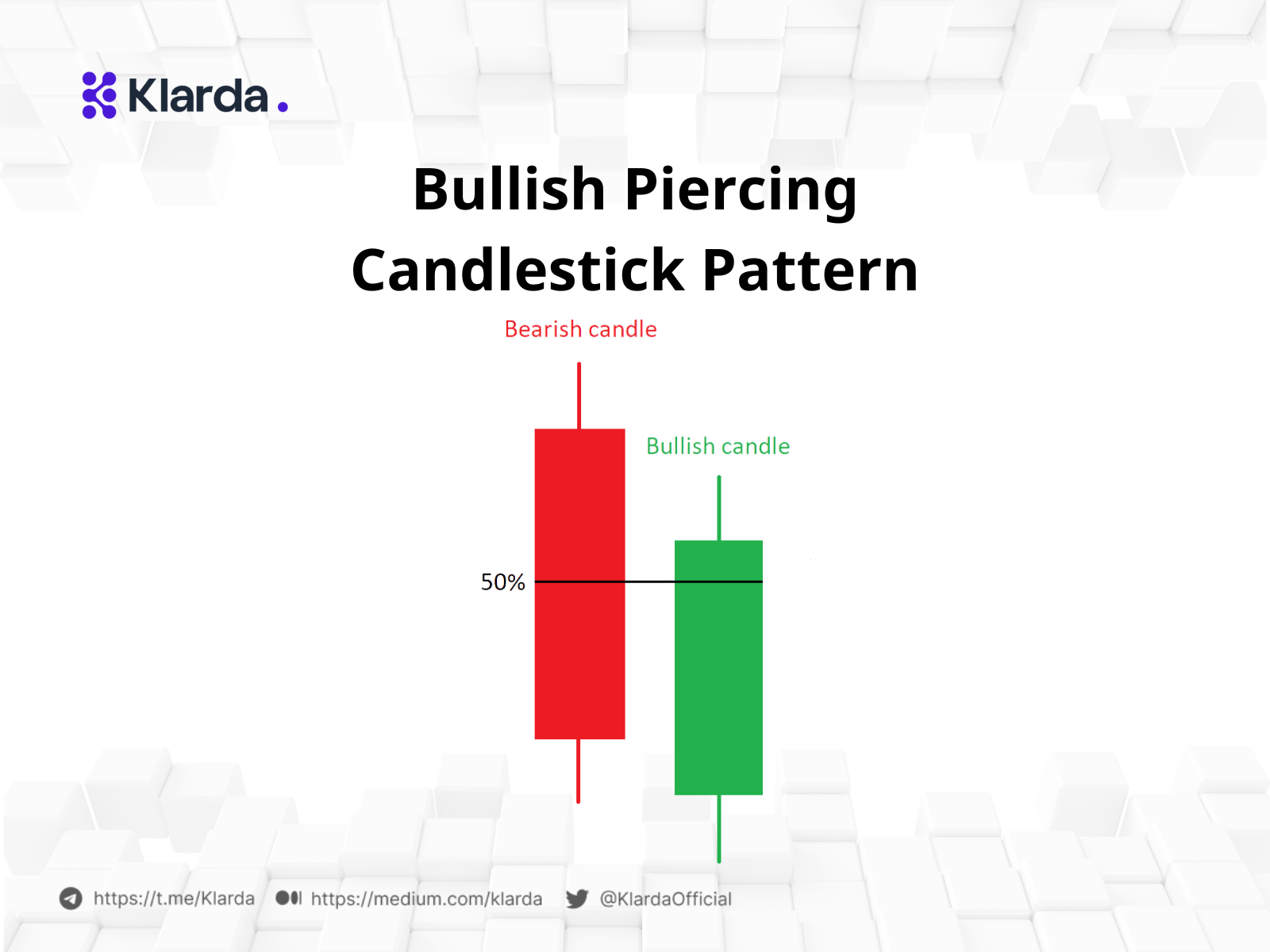
Bullish Piercing Candlestick Pattern
Bullish Shooting Star Candlestick Pattern
The bullish shooting star candlestick pattern has a similar shape to the inverted hammer but forms in an uptrend with a small lower body and a longer upper shadow.
This candlestick pattern signifies that the market will have a gap up at the open and rise to its highest point before closing lower for the day. This upward spike will be right above the opening price. At this point, the candle will resemble a shooting star falling.
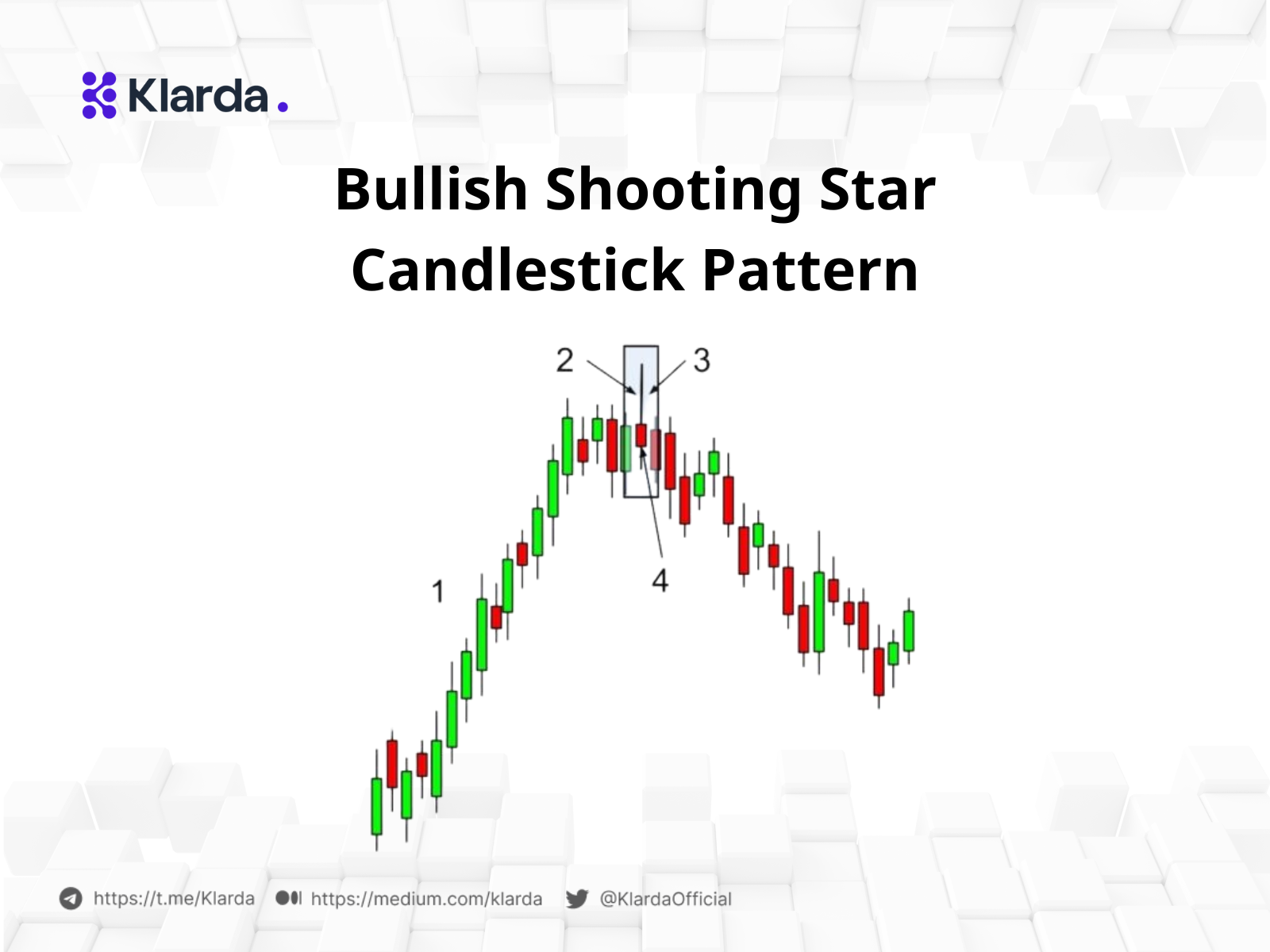
_Bullish Shooting Star Candlestick Pattern
Bullish Doji Star Candlestick Pattern
The Bullish Doji Star is a three-candlestick pattern formed after a downtrend. It consists of a long red candle, followed by a Doji candle, and a green candle. A Doji is a candle with the open, close, and high prices being the same. The Bullish Doji Star is considered a strong bullish reversal signal. It often indicates the end of a downtrend and the beginning of an uptrend.
This type of candlestick pattern suggests that the buying side is starting to take control of the market. The long red candle indicates that the selling side is in control on the first day. However, the Doji candle suggests that the buying side is beginning to regain control on the second day. The green candle indicates that the buying side has taken control of the market on the third day.
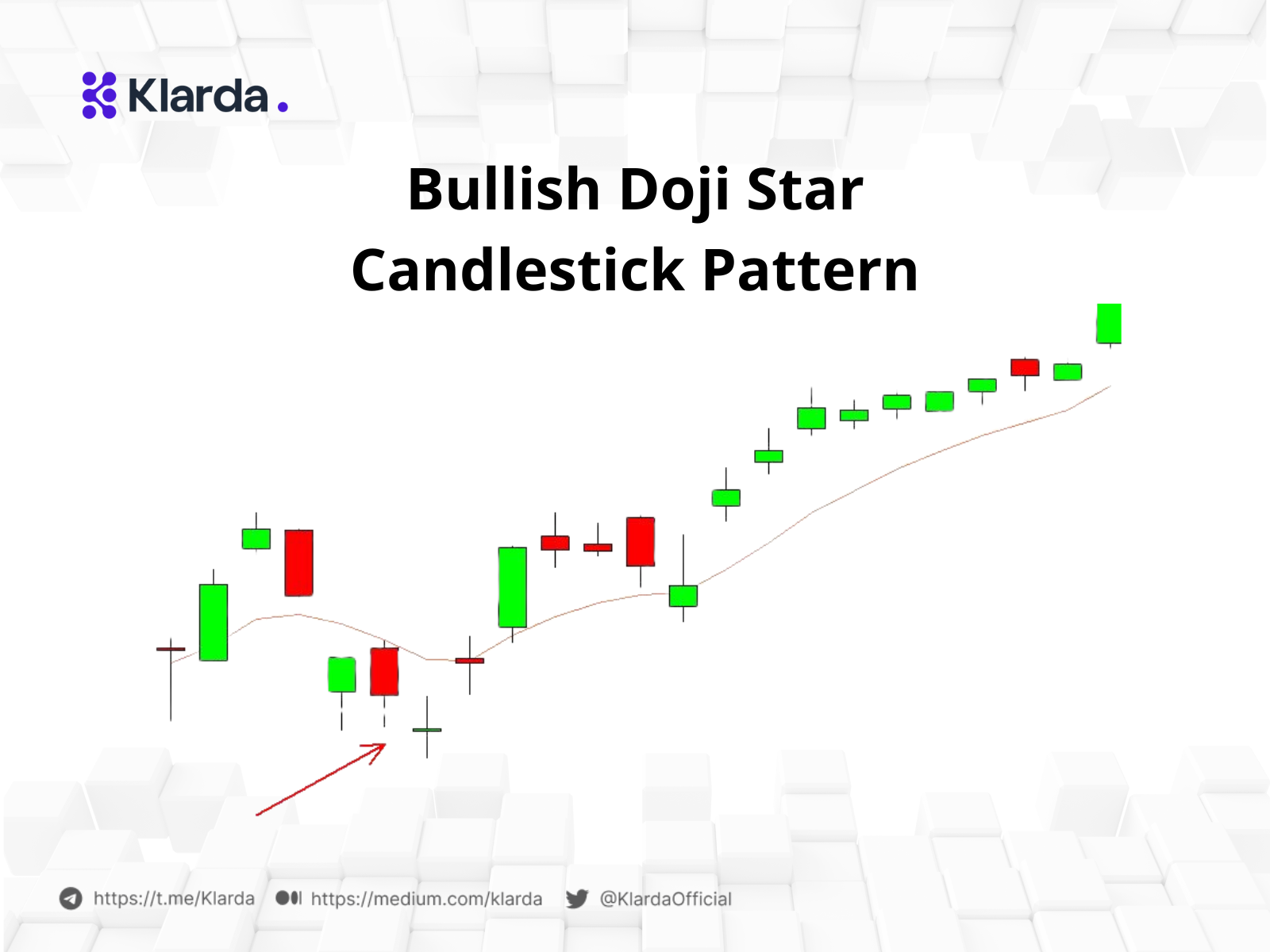
Bullish Doji Star Candlestick Pattern
Bullish Three Line Strike Candlestick Pattern
The Three Line Strike candlestick pattern, also known as the Three White Soldiers, describes the shape of the pattern, featuring three consecutive long white candles that close progressively higher on each subsequent trading day.
This pattern forms after a downtrend and indicates that the buying side is starting to seize control of the market. The Bullish Three Line Strike candlestick pattern has the following characteristics:
- The first candle is a bearish candle.
- The second candle is a bullish candle, closing higher than the highest point of the first candle.
- The third candle is a bullish candle, closing higher than the highest point of the second candle.
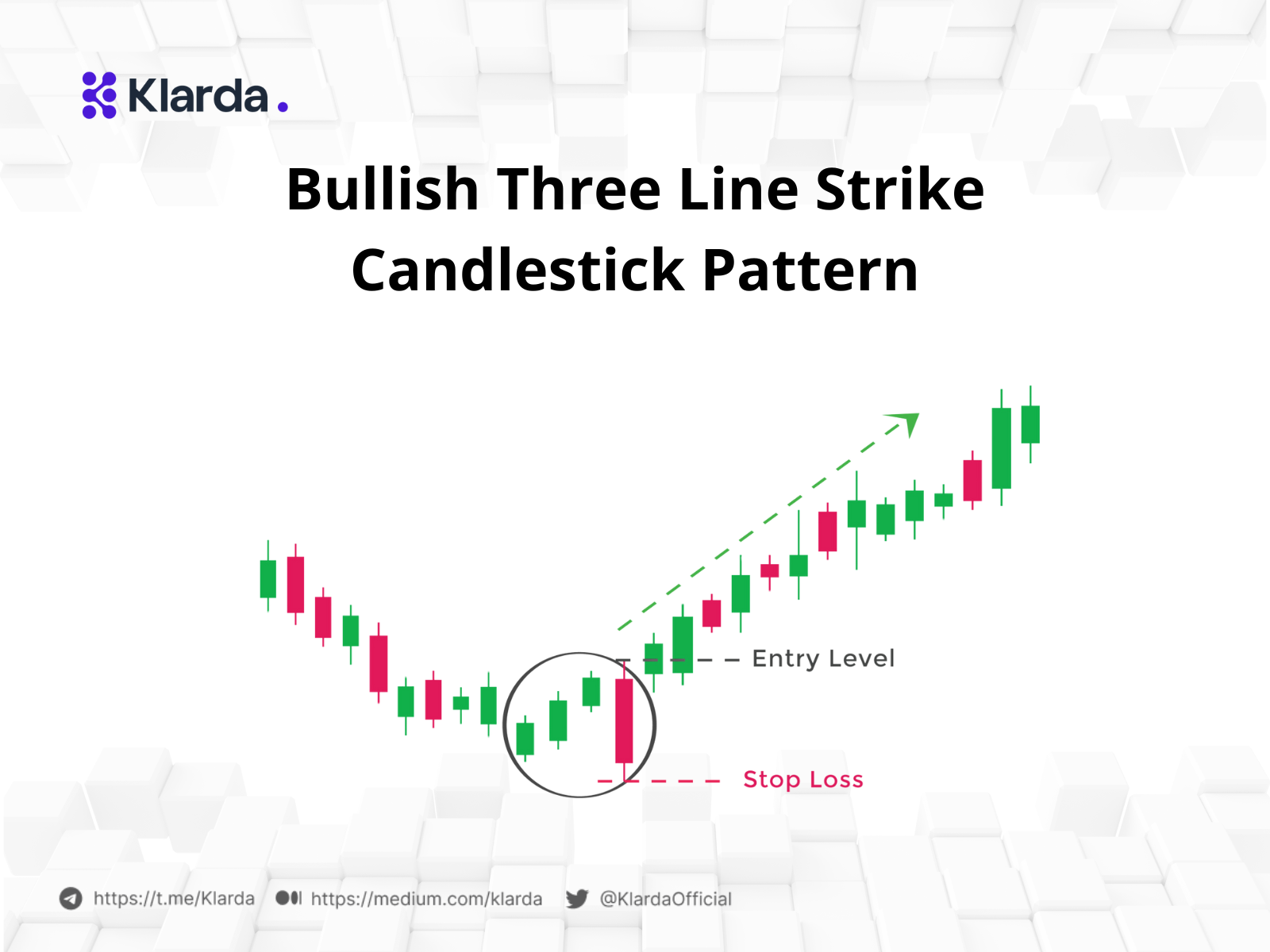
Bullish Three Line Strike Candlestick Pattern
Bullish Kicker Candlestick Pattern
The Bullish Kicker candlestick pattern is also known as the Bullish Two-Bar Reversal. It is a two-candle pattern signaling a reversal from a downtrend to an uptrend. This pattern forms when a long green candle appears after a long red candle. The long green candle must close higher than the long red candle.
This is considered a strong reversal signal. It often indicates the end of a downtrend and the beginning of an uptrend. This pattern is relatively simple and easier for beginners to identify compared to some other patterns.
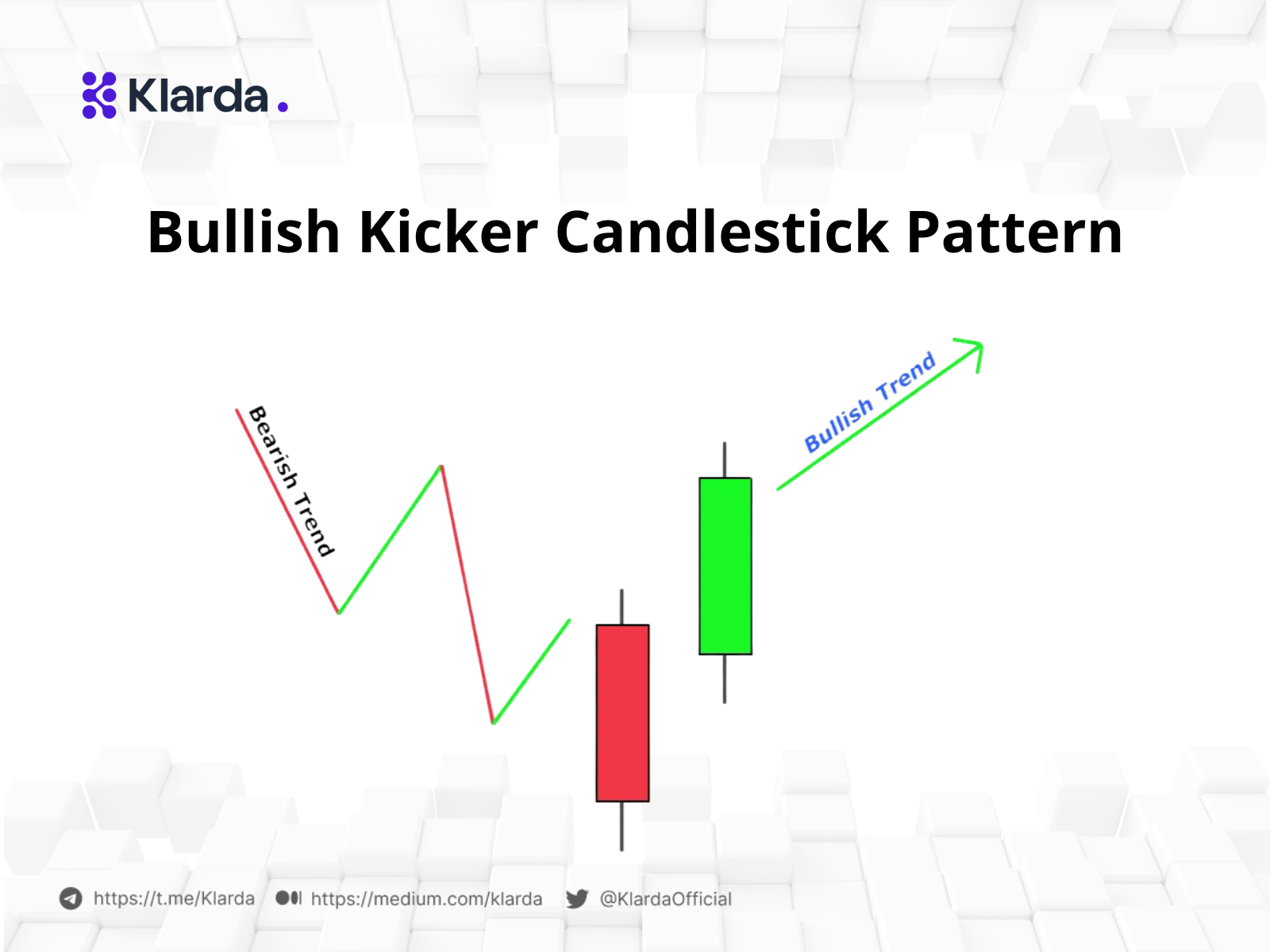
Bullish Kicker Candlestick Pattern
Bullish Marubozu Candlestick Pattern
The Bullish Marubozu candlestick pattern is a one-candle pattern signaling a reversal from a downtrend to an uptrend. This pattern forms when a long green candle with a large body appears, having no lower or upper shadow. This indicates that buyers have controlled the market throughout the entire trading day.
A Bullish Marubozu candlestick pattern must have the following characteristics:
- The candle must be green.
- The candle must have a large body with no lower or upper shadow.
Traders can use the Bullish Marubozu candlestick pattern to identify potential buying opportunities. They often place buy orders immediately after the formation of this pattern.
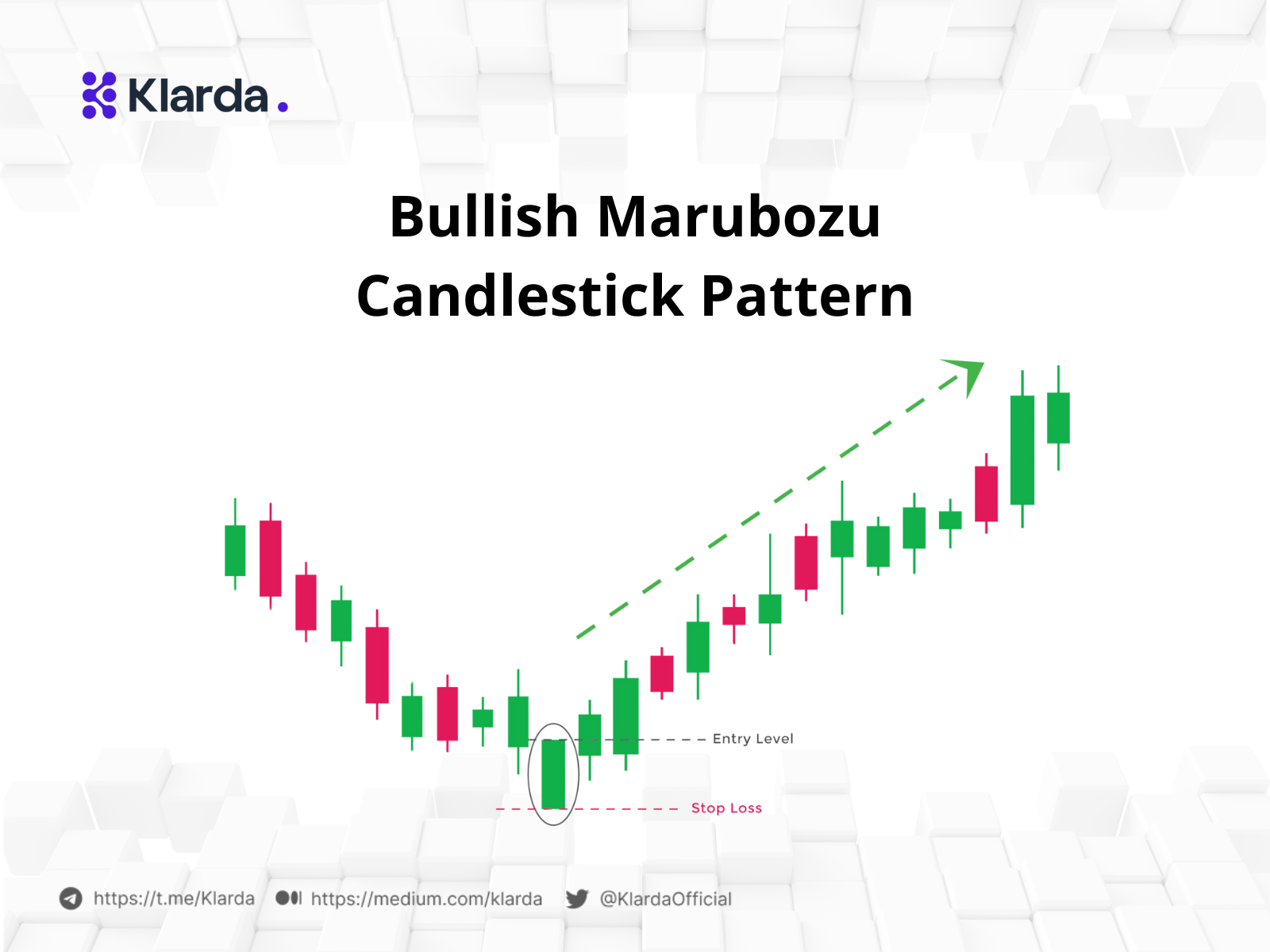
Bullish Marubozu Candlestick Pattern
Bullish Spinning Top Candlestick Pattern
The Spinning Top is a candlestick pattern with a short body situated between wicks of equal length. This pattern indicates indecision in the market. Upon closer observation, investors will notice no clear direction in terms of price change. Buyers are pushing the price higher, while sellers are pushing it lower.
This is considered a signal of a potential pause after a significant uptrend or downtrend. The signal itself can also be interpreted as an indication of impending volatility as the market appears to be losing control.
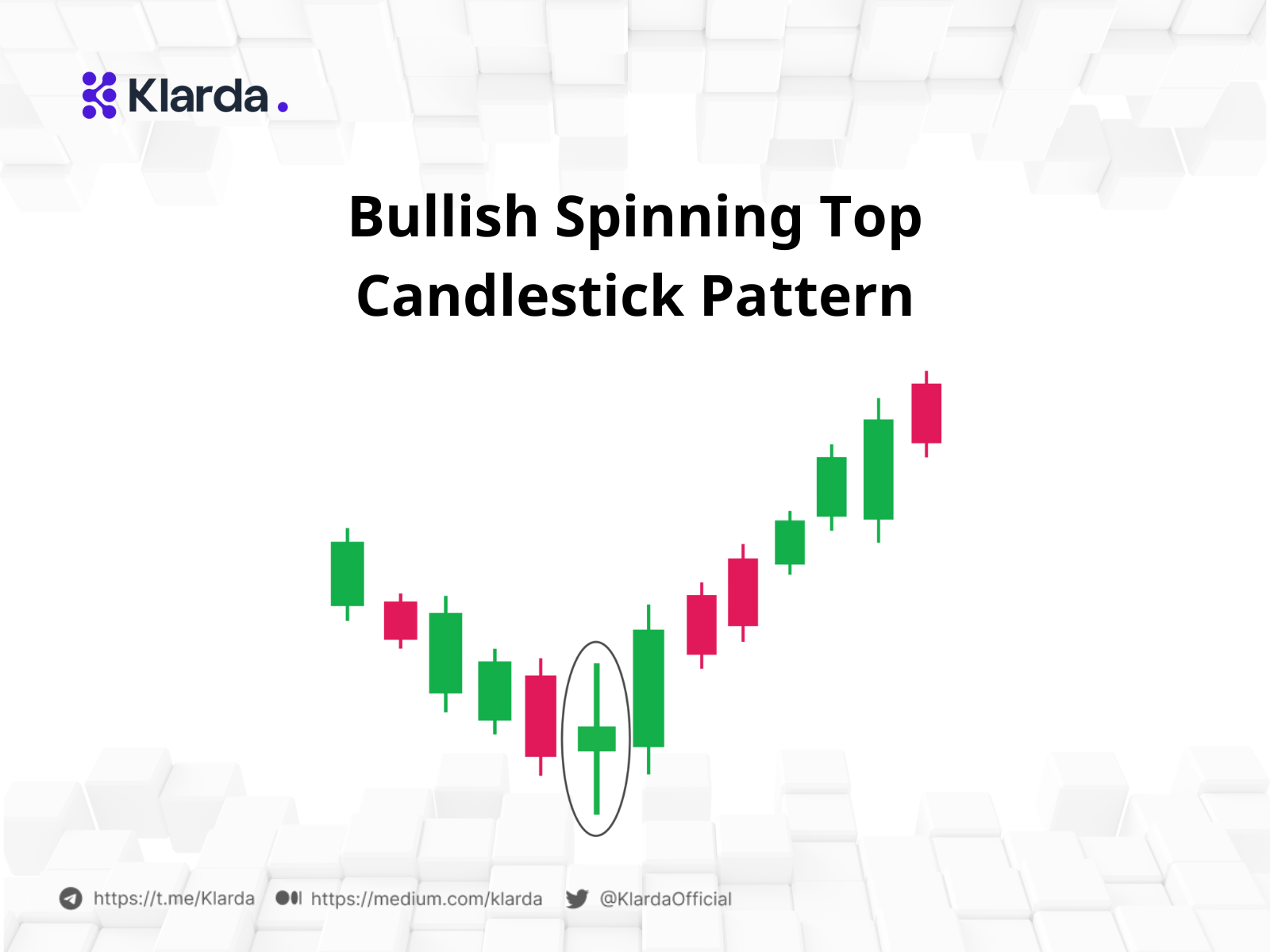
Bullish Spinning Top Candlestick Pattern
Bullish Counterattack Candlestick Pattern
This pattern is also known as the Bullish Meeting Lines candlestick pattern. The Bullish Counterattack candlestick pattern is a two-candle pattern signaling a reversal from a downtrend to an uptrend. This pattern forms when a long red candle appears after a long green candle. The long green candle must close higher than the long red candle.
For a bullish reversal in a downtrend, the first candle that appears will be a long black bearish candle, and the second candle creates a downward gap but then closes at a higher level. This indicates that the sellers are in control initially, but they may lose control as buyers could narrow the gap.
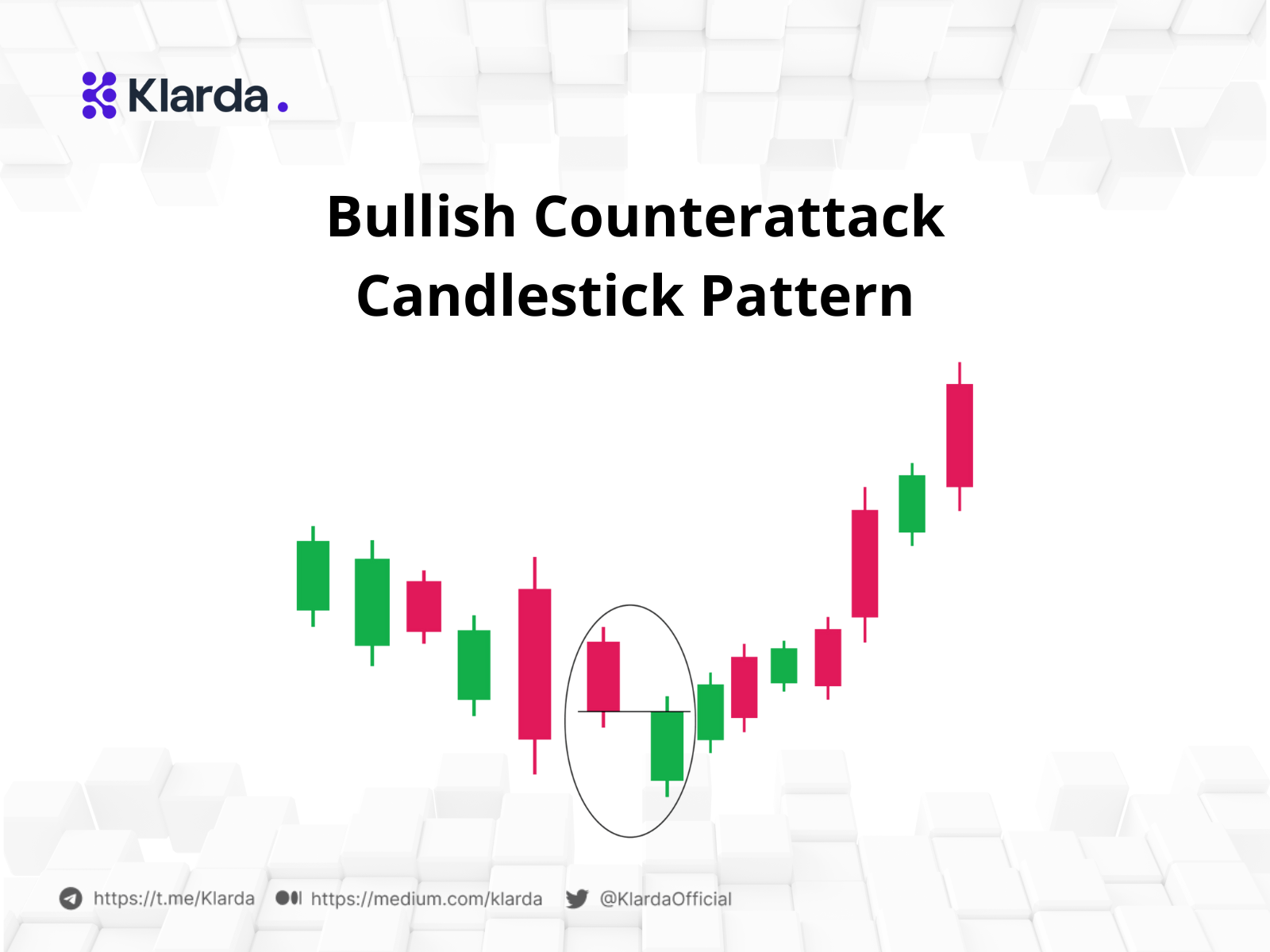
Bullish Counterattack Candlestick Pattern
Bullish Belt Hold Candlestick Pattern
The Bullish Belt Hold, also known as "yorikiri" in Japanese, indicates the potential reversal of the current trend. The Bullish Belt Hold candlestick forms after a series of declining trades. At this point, a rising candle or a white candle will appear.
The opening price becomes the lowest point of the day and is lower than the closing price of the previous day. Subsequently, the stock price rises on the next day, forming a long white candle with a short upper shadow and almost no lower shadow. It is called "belt hold" because the pattern fits closely to the previous candle, preventing the price from dropping much further.
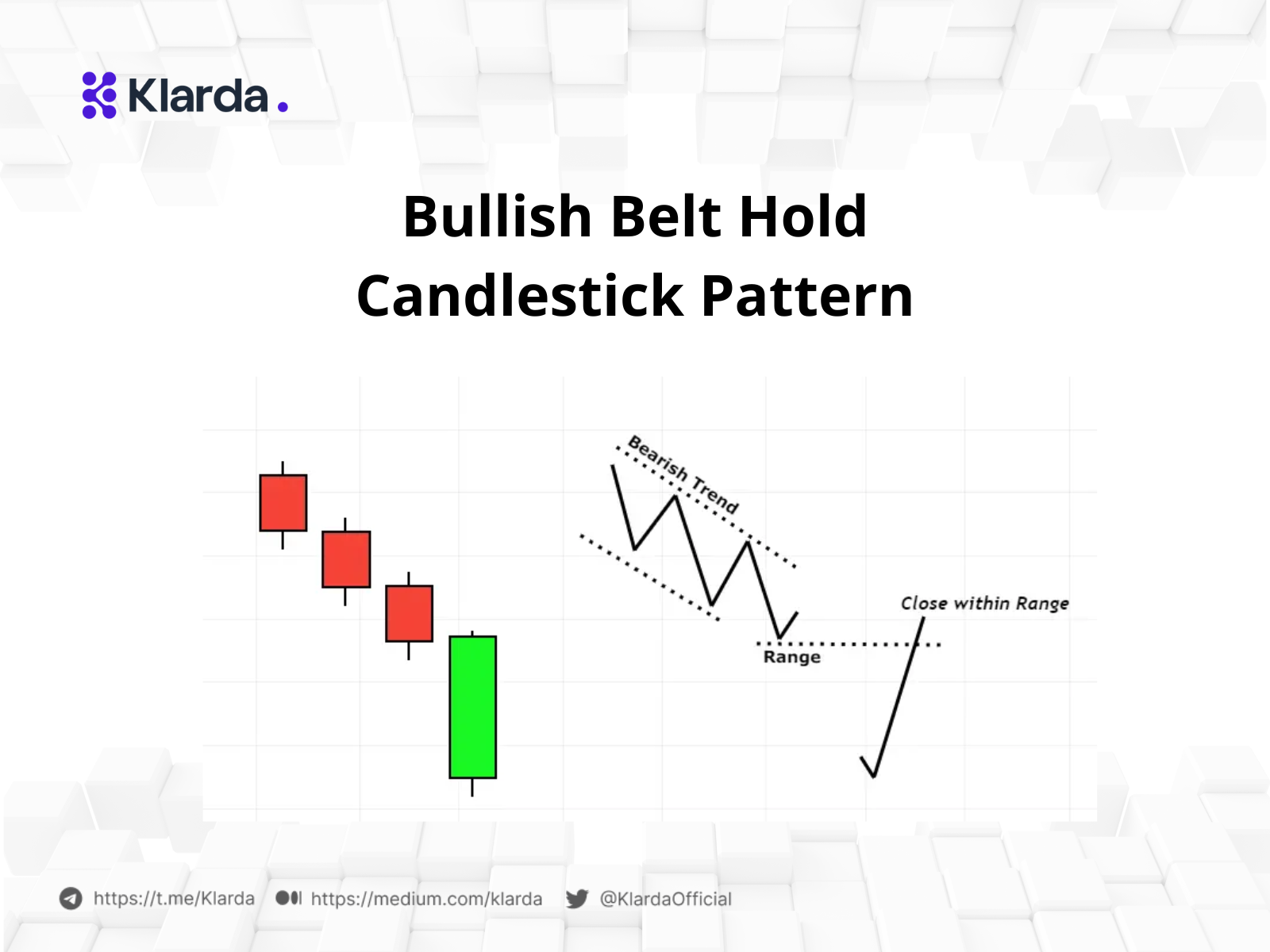
Bullish Belt Hold Candlestick Pattern
Bullish Breakaway Candlestick Pattern
This is a bullish reversal pattern typically forming at the end of a downtrend or during price fluctuations. The pattern has the following characteristics:
- The first candle is long and bearish.
The second candle creates a bearish gap and evolves into a bullish candle. - If the third and fourth candles are bearish, but in some cases, the third candle may be bullish.
- The fifth candle is bullish and will break the highest price level of the three preceding candles.
The term "breakaway" is used because this pattern represents a significant reversal in price. However, some people may interpret this pattern as a bearish reversal.
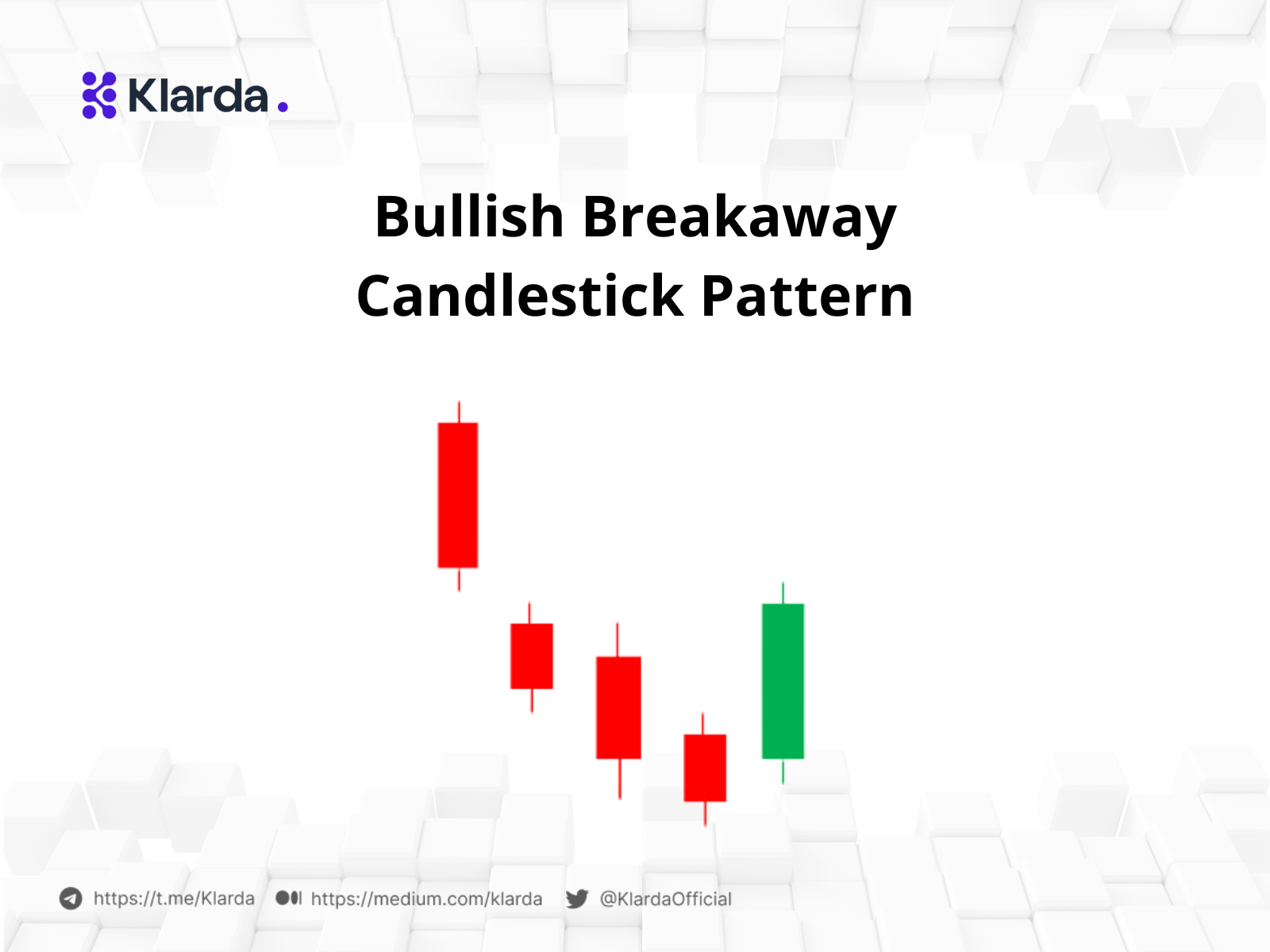
Bullish Breakaway Candlestick Pattern
Bullish Dark Cloud Cover Candlestick Pattern
The Dark Cloud Cover pattern is a common candlestick reversal pattern in the market. While it may not provide as strong a signal as the bearish engulfing pattern, it appears consistently on charts. When combined with other technical indicators, this pattern is an effective tool to help you exit trades promptly as the old trend ends and enter trades for a new trend.
This pattern has the following characteristics:
- The first candle is a long bullish candle.
- The second candle does not necessarily need to overlap the first candle but must be a bearish candle closing below the midpoint of the first candle.
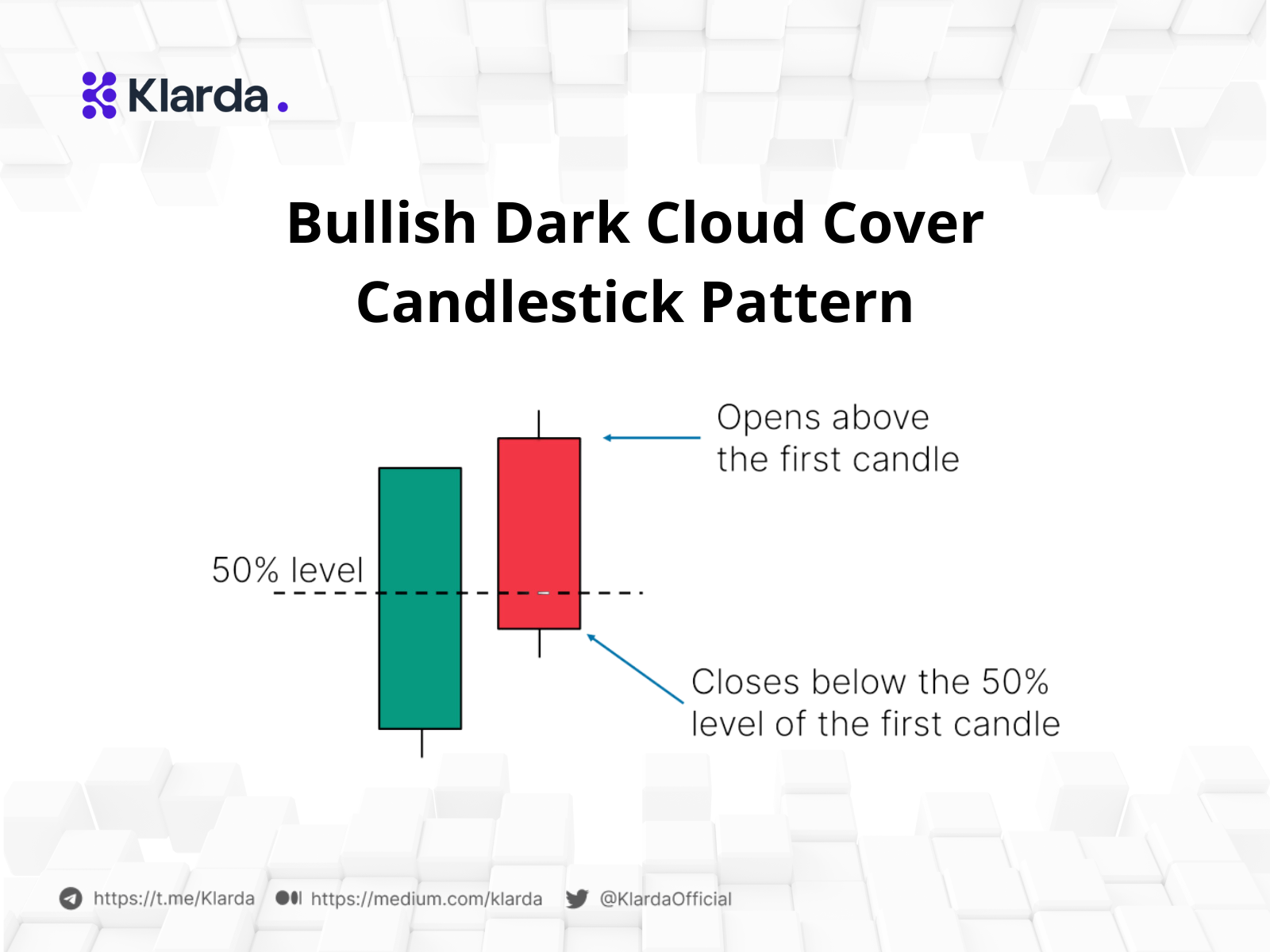
Bullish Dark Cloud Cover Candlestick Pattern
Bullish Reversal Candlestick Pattern
Bullish candlestick reversal patterns are also called the Hammer or the Inverted Hammer. This is a bullish reversal pattern indicating that the stock is near the bottom in a downtrend. The pattern has a short candle body with a longer lower shadow than the upper shadow.
This is a sign that sellers pushed the price lower during the trading session, followed by strong buying pressure to finish the session with a higher closing price. However, before confirming the bullish reversal, you need to validate the uptrend by monitoring the subsequent days.

Bullish Reversal Candlestick Pattern
HOW TO USE BULLISH PATTERNS CANDLESTICK?
Bullish candlestick patterns come in various types and can appear simultaneously on a chart, posing challenges for newcomers to observe. To use Bullish candlestick patterns, you need to consider the following steps:
- Step 1: Identify the current market trend to apply the bullish candlestick pattern.
- Step 2: Look for suitable bullish candlestick patterns, as analyzed above, such as the Bullish Engulfing Pattern with a large green candle completely engulfing a small red candle preceding it.
- Step 3: Confirm the signal with other technical analysis tools alongside candlestick patterns, such as momentum indicators, trend indicators, and support and resistance levels.
The illustrative example below shows the appearance of three candlestick patterns on a chart: the Inverted Hammer, the Piercing Line, and the Hammer. You need to rely on the analyzed characteristics to identify the appropriate candlestick pattern.
A crucial note is that bullish candlestick patterns are not perfect signals and can lead to false signals. Investors need to understand the specific principles of each candlestick pattern and should not expect to profit immediately.
Bullish patterns candlestick is effective tools that help investors gain an overview of the price trend of an asset to make informed decisions. However, savvy investors should combine candlestick patterns with other technical indicators to better pinpoint the timing for entering and exiting trades accurately.
Updated 8 months ago